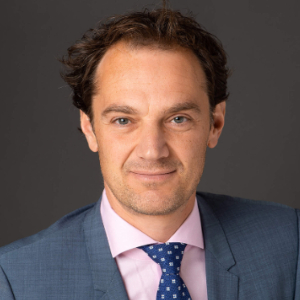
MD, MSc, PhD, Chief Medical Officer for Inflammation and Immunology at Pfizer
View the October 15, 2020 MAPS Global Town Hall HERE; MAPS members, download Town Hall slides HERE.
The MAPS Global Town Hall on October 15, 2020 was the third in a series of events focusing on the challenges arising from the global COVID-19 pandemic and the emerging opportunity for Medical Affairs to provide strategic leadership (April and July Town Halls). In his opening remarks, Tamas Koncz, MD, MSc, PhD, Chief Medical Officer for Inflammation and Immunology at Pfizer, reviewed participant survey results that confirm the same trend seen in surveys conducted before the previous two events: the professional life of Medical Affairs colleagues have substantially changed and it is strongly believed that many changes are here to stay. Tamas challenged the audience to look back at last 6-9 months and contemplate how our industry has been scrutinized more than ever, expected to provide relief with Covid vaccines and treatments while science became politicized. Having extensively discussed Evidence Generation and Evidence Dissemination at the last Town Hall, Tamas identified Digital Innovation and Field Medical as the next set of key domains within Medical Affairs that have seen significant disruption and adaptation during the pandemic. These topics were discussed by two senior Medical Affairs professionals.
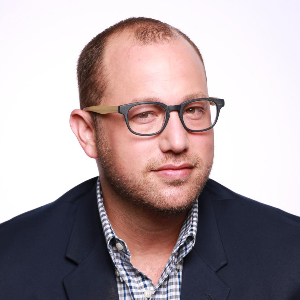
Robert Stevens, VP, Global Head Digital Medical Affairs, Novartis.
Digital Innovation in Medical Affairs: Robert Stevens, VP, Global Head Digital Medical Affairs, Novartis
Robert explored COVID-19 as an accelerator for the Digital transformation already underway to varying degrees in many Medical Affairs organizations. Robert compared the introduction of Digital in pharma to the introduction of electricity in factories, suggesting that Digital offers the opportunity for Medical to “be more careful, more delicate and more strategic about what experience we provide.”
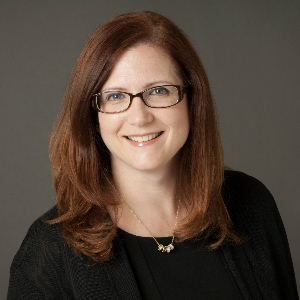
Terry Griesing, VP, Head of North America Medical Affairs, Internal Medicine, Pfizer.
Evolution of Field Medical During the Pandemic: Terry Griesing, VP, Head of North America Medical Affairs, Internal Medicine, Pfizer.
Terry pointed out challenges and especially opportunities afforded by the shift toward virtual interactions between MSLs and HCPs. Surveys show many HCPs desire increasingly targeted and efficient, while also substantial peer-to-peer scientific exchange with Medical, and that Field Medical has the opportunity to provide this exchange via omni-channel engagement including a mix of virtual and face-to-face interactions.
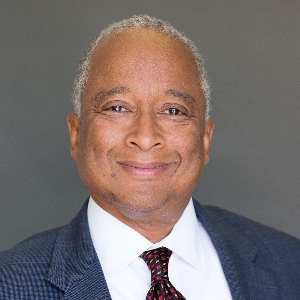
Eric Mortensen, Head Gastrointestinal Clinical Development, R&D Janssen Immunology
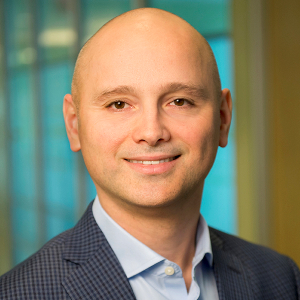
Liviu Niculescu, SVP, Global Medical Affairs at Bluebird Bio
MAPS Global Town Hall Oct 15: Q&A
Talks were followed by a Q&A session with a distinguished panel of senior Medical Affairs and Clinical Development leaders including Eric Mortensen, Head Gastrointestinal Clinical Development, R&D Janssen Immunology, and Liviu Niculescu, SVP, Global Medical Affairs at Bluebird Bio. With more than 1,100 event registrants and strong engagement in online Q&A, the panelists were able to elaborate on the key themes as well as provide answers with specific examples to several questions. However, given the large number of questions, the Q&A summary below provides additional written answers and insights from the panelists. A few additional, important questions that explored topics other than Digital and Field Medical have inspired the closing event of this Town Hall series where Medical Capabilities and Insight Generation will be discussed. Stay tuned…
DIGITAL
Q: How is AI being used in medical communications?
A: It depends on what aspect of medical communications. One thing that comes to mind is increased personalization and custom-curation of content based on customer needs, and preferences. Similar to subscription music services, or other subscription media, AI can enhance the experience provided to customers regarding medical communications.
Q: Do you envision meetings maintaining a virtual component after the pandemic ends?
A: We will probably always have virtual as a component after the pandemic ends, at least for the foreseeable future, because the pandemic has shown us what’s possible – that it is possible. Perhaps we will get to a hybrid-model between live and virtual.
There seem to be several – previously never considered – advantages to virtual scientific meetings in terms of convenience, reach and ability to collect medical/clinical feedback from much larger audiences.
Q: How can we keep up with the rapidly changing technology and the need to deliver information in tweet-sized pieces while staying fair balanced?
A: This is clearly challenging in a highly regulated industry and the need to ensure medical accuracy however, we need to continue to explore ways in which we can share clinically relevant content prior, during and following medical engagements with HCPs.
Q: How can we avoid overwhelming doctors with Digital solutions (from webinars to apps, landing in telemedicine) and making these solutions ineffective?
A: Medical Affairs has an opportunity to reset how it segments customers and can identify new customer archetypes that can be mapped to effective Digital solutions. It’s also important we co-create strategy with our customers. We have an opportunity to ask questions and listen more.
Q: Top Digital innovations Medical Affairs should institute. Should the ROI of Digital innovations be measured, and if so, how?
A: Each company can work within their own framework to define how Digital impact can be measured. ‘Digital’ can be broad and so depending on the Digital activity, there will, or can be, a different Digital measure of value. So long as compliance is aligned for a respective company, then the value of Digital in Medical Affairs could be worthwhile to measure.
Q: What was the name of the book Robert mentioned?
A: The Power of Moments, Why Certain Experiences Have Extraordinary Impact, by Chip and Dan Heath
Q: Please give examples of how Medical Affairs use social media
A: Social media, for Medical Affairs, can be used how it is used for other parts of the business, industry, and world around us. There are mainstream social media outlets and more-technical social media outlets, it’s ultimately a content and channel strategy.
Q: I feel that currently the limits of Digitalization of healthcare are only in our head. However, is there a serious risk of overwhelming doctors, producing a complete repulse toward emails coming from pharma companies?
A: Great point, which is why we advocate that we co-create how we engage. We also think it would serve Medical Affairs functions extremely well to have fully-dedicated Digital function or support to help Medical Affairs better leverage Digital in ways congruent with HCP preferences.
Q: HCPs getting information and engaging on Twitter and Instagram — are they reading and understanding all the data in the article, or just getting a snippet and running with it?
A: More segmentation could help to assess this further, but if we think more-generally about how we consume information and content, there are similarities we can draw upon when we think of HCPs. Different people have different learning preferences.
Q: How do you navigate the pushback on the cost of developing Digital education tools (videos, AI, etc.), especially with how quickly information changes and the need to do more than a “slide swap”?
A: It’s a mindset shift that is needed to reprioritize Digital in Medical.
Q: How have you dealt with the compliance and legal barriers to digital engagement for Medical Affairs? What are the barriers or opportunity areas to push for change and evolution?
A: COVID has created an opportunity for functions to re-engage with compliance and legal colleagues because we are operating in a pandemic. Business as usual is not the case, and so we have to really partner effectively and be solution oriented. And many changes that we see during the pandemic will remain. Not just Medical Affairs and Digital, but regulations need to adapt to guarantee complete integrity in all we do.
Q: Given the tech savvy of a younger population vs. older (I know I’m somewhat stereotyping), how do you think about segmentation by tenure or age of clinician?
A: Super important. Yes, we have to go more micro-segmentation and what segments showed pre-COVID is different than post-COVID. COVID has caused changes in segments too.
Q: We hear more and more about “ZOOM fatigue” since the duration of the pandemic – How would you address this “ZOOM fatigue”?
A: We all personally deal with this, too, and we have to find the balance. Some sources suggest that HCPs will start having (if they haven’t already) ‘virtual days’ and ‘office-live days.’ This is more about how we personally find the balance and manage this balance with how we engage externally with Zoom.
Q: Do you think the adoption of virtual meetings for such things as advisory boards will continue post-pandemic?
A: Yes, but industry has been doing VABs for a long time. So we will net out probably somewhere between where we were before COVID and where we were at the peak of COVID, but this also depends on how COVID plays out.
Q: How do you Digitally engage with HCPs in Europe as the compliance is not the same there and with GDPR in place?
A: In Europe you can engage through any Digital means with consent from the HCP – which may be implied, for example when they have asked for an interaction.
Q: Within the Medical Affairs organization, do you have individuals dedicated to the Digital strategy separate from those doing the more traditional Medical Affairs role? Do you get any support from the marketing organization?
A: Different companies have different set-ups. In some companies there is a fully-dedicated Digital Medical Affairs embedded within Global Medical Affairs with dotted line into the Digital Office. Other companies have dedicated Digital partners who report into the Digital function and there are still others with limited or no Digital support.
FIELD MEDICAL
Q: As the role of the MSL continues to evolve, what would you consider as essential capabilities in their Digital toolkit? What, if any, capabilities can field medical leverage from their commercial partners?
A: We would propose that medical has done very well in engaging and maintaining engagements with HCPs during the pandemic. As we mentioned empathy was and will remain an important pillar of medical professionalism that we must continue to demonstrate. Medical will need to continue to build on virtual engagement capabilities (including 1:1, group meetings and scientific meetings/virtual congresses, etc), the ability to identify an expanded number of HCPs to engage (including those that are interactive on social media).
Q: From your company’s perspective, how useful and effective have virtual interactions between field medical and HCPs been? Is it merely a stopgap emergency approach, or useful tool to expand upon?
A: We don’t think it is only a stopgap as virtual interactions are expected to make up a significant proportion of interactions for the foreseeable future. HCPs are appreciating the ability to engage with medical virtually and there are benefits emerging to this approach – this will be a useful tool to build as the future is likely to be a balance of in-person and virtual engagements.
Q: What makes a successful Medical Science Liaison? How do the KOLs perceive field medical?
A: A successful MSL can respond to the expressed needs of HCPs – healthcare landscape, disease state, treatments options, devices, etc. They can engage in clinically relevant discussions without relying on the need to deliver a pre-determined set of slides/materials. Recent surveys suggest that HCPs value engagement with medical colleagues and they are looking for ways to enhance the opportunity to engage with medical even more moving forward.
Q: If I heard correctly, Terry referred to HCPs wanting omnichannel engagement from Medical. I thought true omnichannel includes interaction from different functions (including Medical) rather than function-specific?
A: Interesting and good comment here. Agree there is a broader organizational orchestration that is needed, but within each function, there could be a subset of OCE.
Q: What are the lessons learned and “low grade signals” we are getting from outside of BioPharma to provide us valuable insights to adapt our “traditional” business models?
A: We should look at fin-tech or other similar service models and see how they deal with customer queries, problems, etc. In terms of signals, the other industries are generally ahead, which allows us to observe what works, doesn’t, and how we can pivot and adapt for ourselves.
Q: Are MSLs becoming SMSLs? Social Media Scientific Leaders? 🙂
A: Nice. See above on social media. But the value of in-person, substantial, peer-to-peer HCP/MSL interaction will rise even further.
Q: Is saying 40% HCPs want virtual interactions post-COVID misleading, as this is very much country- and cultural-led, with many countries wanting F2F, so one size does not fit all and we need to cater to all HCP needs and be flexible with this expectation?
A: Good observation. Stats are stats; you can find stats that either support a position or challenge one. I think we have a long way to go to sort this out, but we need to do it now–sooner rather than later–to continually gather insights and segment.
We agree that this can be country and HCP-specific – surveys only give us an indication of what things to consider in the present and moving forward. Listening and understanding the needs and preferences of HCPs is a critical aspect to medical engagements.
Q: If virtual HCP engagement continues to be preferred (versus face to face), do you believe the demand for MSLs will decrease (i.e. MSLs can cover more HCPs since no travel is required, so large teams are not needed)?
A: We think we need to think more creatively; territories perhaps mean less, and so we can think more innovatively, but the value MSLs deliver–and upskilling with Digital is crucial to enable MSLs to meet HCPs where they are.
Q: Which soft skills are most critical for MSLs to be successful in this virtual world?
A: Empathy and listening.


